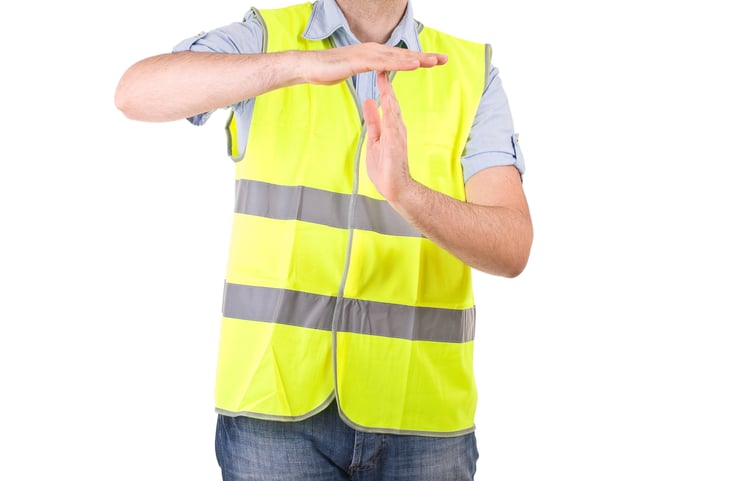
You just got off the phone with your project superintendent. It wasn’t a good call. He phoned to tell you that a dump truck just tore out an overhead distribution line while backing up with the dump bed raised. The spotter who was assisting the dump truck driver hadn't noticed the overhead hazard.
Unfortunately, a few of the other workers on the site did see the hazard but didn’t say anything. They assumed the operator of the dump truck or the spotter would catch it so they didn’t speak up. Now you have to add these additional costs and delays to your project. What could you have done differently to help prevent this incident? How about instituting a Stop Work Authority policy?
What is Stop Work Authority (SWA)? It’s a policy or safety program that gives employees the responsibility as well as the obligation to stop work when they feel a condition is unsafe and could result in an incident.
It’s common for most construction projects to have some form of SWA policy in place for any and all workers on site. The goal behind an SWA policy is to encourage individuals to speak up when they see a potentially unsafe situation unfolding without fear of retribution. In the past, some individuals were reluctant to speak up about safety because it “wasn't their job” or “not their obligation." SWA essentially deputizes each individual on a project as a member of the safety staff. The benefit is anyone is free to halt a potentially dangerous situation, not just "the safety guy."
An inspector is a prime example of someone who can maximize the value of an SWA policy. Inspectors are generally on site and observing. This puts them in a prime position to see tasks as a whole and to see the bigger picture, as they’re not focused on one task but instead the entire project. It's also important to discuss the SWA process and authority at project kick-off meetings and weekly safety meetings to ensure everyone is aware of their responsibility to stop work when imminent hazards are observed.
Construction sites are busy, and often comprised of multiple trades, contractors, and sub-contractors working on many different tasks simultaneously. With so much going on at any given time, and so many individuals focused on the task in front of them, it’s essential to have an SWA policy in place to utilize those multiple trades in preventing incidents before they occur.
In future Stop Work Moments we’ll discuss real life situations where implementation of an SWA prevented a safety incident as well as hypothetical situations that may help you be better prepared and equipped to prevent incidents.
 Photo credit: Adobe/Mi.Ti.
Photo credit: Adobe/Mi.Ti.